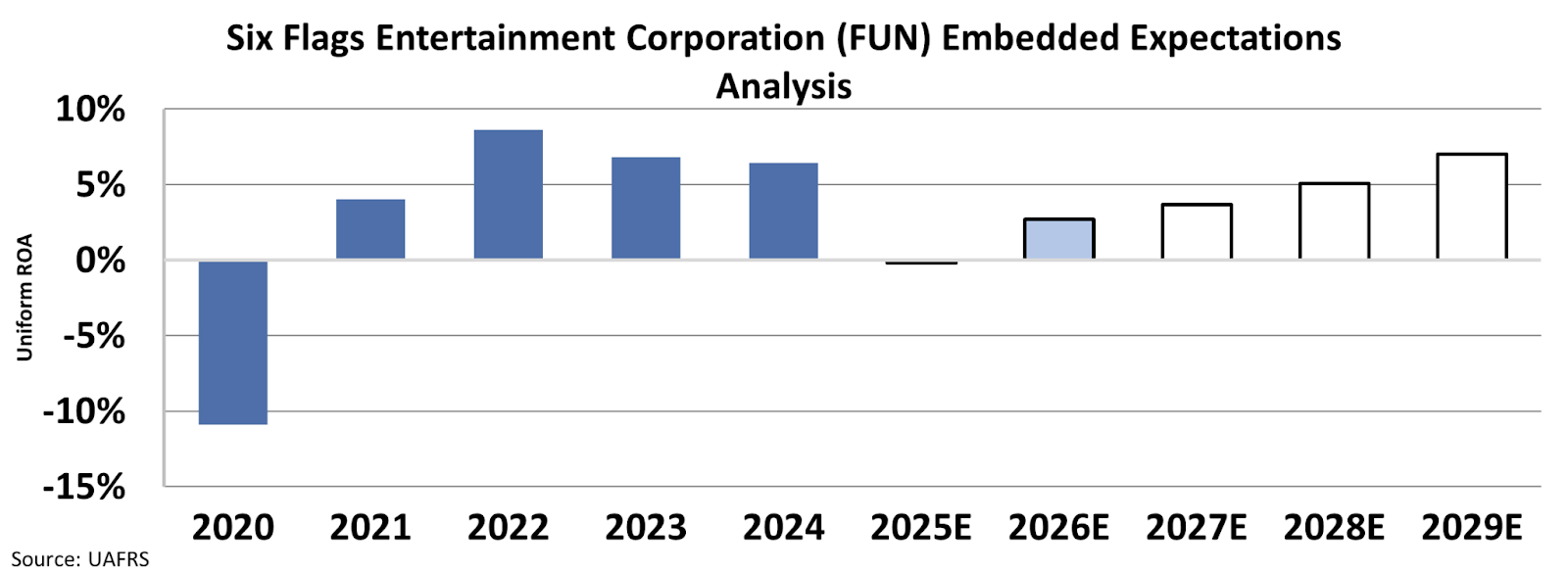This amusement parks operator is set to have a nightmare of a year so far as it continues to get attention for all the wrong reasons

Amusement parks are one of the staples in American leisure spending, these parks have a lot to offer to various age demographics and personal tastes.
While the market size of the U.S. amusement park sector stands at $28 billion, operators often work with thin margins due to enormous operating costs. Companies like Disney (DIS) spend hundreds of millions of dollars in capital expenditures for their parks business.
Six Flags Entertainment Corporation (FUN), one of the largest operators in North America, is experiencing a rough year so far.
Park attendance this year has been constrained by poor weather conditions, leading to multi-day shutdowns for parks.
This consequently led Six Flags to fall short of top line projections during the second quarter, as park attendance fell 9% year over year. Following this news, CEO RIchard Zimmerman announced that he will be stepping down from his position at the end of the year.
The company’s stock is down more than 45% this year, yet despite this and the issues it faces, the market expects the company’s Uniform ROA to slightly improve over the next few years, from 6% to 7%.
Conversely, Wall Street analysts who understand this company predict the company will produce slightly negative returns this year, with ROA improving to 2% by 2026.
Investor Essentials Daily:
Wednesday News-based Update
Powered by Valens Research
Amusement parks have long been a staple of American entertainment. This $28 billion market attracts more than 400 million people each year and generates billions of dollars for the largest players in this space.
That said, the amusement park business is a fragile one. Companies like Disney (DIS) and Six Flags Entertainment (FUN) incur hundreds of millions of dollars in capital expenditures each year for their parks, renovating aging rides and maintaining safety standards for complex—and potentially dangerous—attractions.
Dysfunctional rides hurt companies both in the form of the added costs to fix them, as well as the cost of losing visitors. Six Flags Entertainment has experienced this this summer with its new ride Siren’s Curse, at its Cedar Point theme park.
The ride has broken down five times since its opening in June, leaving riders stuck more than 100 feet in the air at times. The company’s recent struggles with this new ride act as a microcosm for Six Flags, which operates 42 parks in North America.
The company has struggled so far this year. Poor weather conditions throughout the year have constrained attendance, resulting in multi-day shutdowns for some parks.
Due to these issues, Six Flags fell short of top line projections during the second quarter, as park attendance fell 9% year over year. On the back of this news, CEO Richard Zimmerman announced he will be stepping down from his position at the end of the year.
Zimmerman was the former CEO of Cedar Fair and was tasked with guiding Six Flags after the two companies merged last year. So far, the merger has not paid dividends, and the company is looking to sell land and close some locations so it can continue to build more attractions while reducing its debt, which credit rating agencies have recently downgraded.
However despite these struggles, the market does not appear to be grasping the struggles this business faces.
We can see this through our Embedded Expectations Analysis (“EEA”) framework.
The EEA starts by looking at a company’s current stock price. From there, we can calculate what the market expects from the company’s future cash flows. We then compare that with our own cash-flow projections.
In short, it tells us how well a company has to perform in the future to be worth what the market is paying for it today.
At current prices, investors expect Six Flags’ Uniform return on assets (“ROA”) to slightly improve over the next five years, from 6% to 7%. Conversely, Wall Street analysts who follow this company understand the current headwinds, and predict the company to produce slightly negative returns this year, with ROA improving to 2% by 2026.
After a dismal showing in 2020 due to pandemic-driven shutdowns, Six Flags’ Uniform ROA rebounded in 2021 and 2022. However, the company’s returns have struggled to maintain their momentum, and the recent merger between Six Flags and Cedar Fair does not appear to have unlocked synergies as of yet.
The company’s stock is down more than 45% this year, and current valuations suggest this may have more room to fall still.
Best regards,
Joel Litman & Rob Spivey
Chief Investment Officer &
Director of Research
at Valens Research

